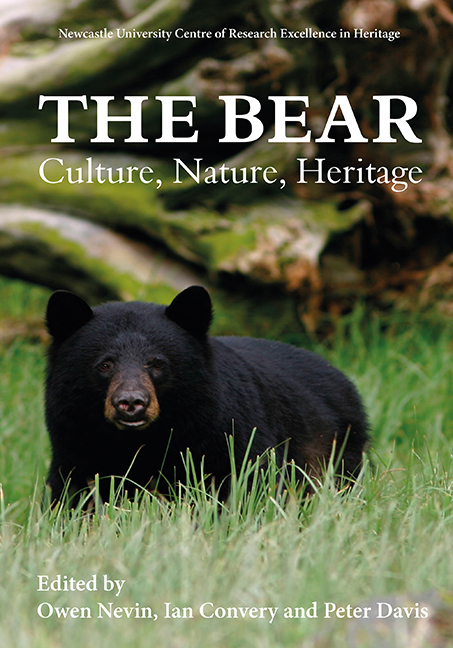Book contents
- Frontmatter
- Contents
- List of Illustrations
- Acknowledgments
- List of Abbreviations
- Foreword: The Bear: A Cultural and Natural Heritage
- Introduction: What is a Bear?
- Bear-People Interactions
- Bears in the Public Gaze
- Bear Biology, Management and Conservation
- Afterword: “It's Me Bear”: Reflections on a Unique Career Working with Bears
- List of Contributors
- Index
- Previous titles
1 - The Spirit Bear
Published online by Cambridge University Press: 21 March 2020
- Frontmatter
- Contents
- List of Illustrations
- Acknowledgments
- List of Abbreviations
- Foreword: The Bear: A Cultural and Natural Heritage
- Introduction: What is a Bear?
- Bear-People Interactions
- Bears in the Public Gaze
- Bear Biology, Management and Conservation
- Afterword: “It's Me Bear”: Reflections on a Unique Career Working with Bears
- List of Contributors
- Index
- Previous titles
Summary
The Spirit Bear is a sub-species of black bear found in the British Columbia area and on a small number of islands near Alaska. It is an all-white bear known as the Kermode Bear (Ursus americanus kermodei), but for First Nations people it is the Spirit Bear. Described in 1905 by William Hornaday, the scientific name recognizes the contribution made by his co-researcher Francis Kermode. During the early decades of the 21st century sightings remain scarce, principally due to the small cryptic populations being found in rather inaccessible locations combined with the secrecy of the aboriginal peoples for whom the bear is held so dearly. This chapter aims to provide an understanding of Canada's First Nations peoples, their relationship with the Spirit Bear and their role in a dynamic conservation setting through collaborative research and ecotourism ventures. It is based on my personal experiences of living and working with the Kitasoo and Xai’xais nations between 2011 and 2016.
THE COASTAL FIRST NATIONS
To understand the sociocultural importance of the Spirit Bear, it is essential to better understand the First Nations peoples in whose traditional territories the bear resides. The presence of humans on the central and northern coast of British Columbia dates to 11,000 BC, which coincides with the glacial retreat of the last ice age, providing the beginnings of an intimate relationship humans in this region enjoy with nature, a connection that continues to flourish today. These men and women were warriors, hunters, traders and expert custodians of their lands and waters, to whom ‘conservation’, informed by rich ecological knowledge, has always been a natural way of life (Clarke and Slocombe 2009; Hallowell 1926; Turner et al 2000). For example, the harvesting traditions of the Kitasoo and Xai’xais nations demand that you must always leave the first four of anything you gather; for example, when picking berries, upon reaching a bush the first four berries you pick will be thrown over your shoulder. Coastal communities are still highly dependent on ocean and forest resources for both food and medicine. Species such as devil's club (Oplopanax horridus) and poison root (Veratrum viride) are still used medicinally on a daily basis. Elders teach that the medicinal properties of these plants increase in strength the farther from the community that they are gathered, thus providing suggestion of a conservation-oriented culture.
- Type
- Chapter
- Information
- The Bear: Culture, Nature, Heritage , pp. 13 - 22Publisher: Boydell & BrewerPrint publication year: 2019

